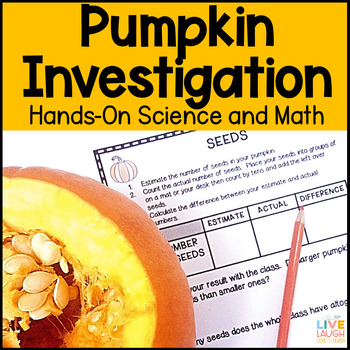Pumpkin Investigation - Math & Science Activities
- PDF
What educators are saying
Description
Make celebrating fall and Halloween season in your classroom meaningful and engaging while incorporating math and science skills with a Pumpkin Investigation with math and science activities. This Pumpkin Investigation resource provides all that you’ll need to have a Pumpkin Math & Science Day in your classroom! All you need to add are the pumpkins.
Your students will have fun while getting hands-on with a pumpkin to measure volume, weight, and height, observe and compare physical properties,, tally and graph purchase locations, review the pumpkin life cycle, and giggle (or groan) at the pumpkin joke hidden on every page.
Here's what you'll get:
- Teacher Directions for planning a Pumpkin Investigation Day
- Family Pumpkin Donation Request letter
- Teacher Directions to find the volume of a pumpkin
- 12-page Student Pumpkin Math & Science Investigation Booklet (print in full-page or booklet format)
The Student Booklet includes recording pages and questions to discuss the following Math & Science Skills:
- Estimating and measuring weight & volume
- Estimating and measuring the height
- Putting the stages of the Life Cycle in order
- Observing properties of the outside & the inside
- Classifying and sorting pumpkins
- Creating a bar graph of where the pumpkins were purchased
- Comparing and analyzing observations and results
Your students will love being able to work with a pumpkin and their classmates to compare the properties of a pumpkin and practice real-world math and measurement skills.
Prep is quick and easy... Send home a request for pumpkins before the big day and just print the student pages and you're ready for a fun and engaging Pumpkin Day.
___________________________________
Having difficulty with a file?
Visit the FAQs section, submit a help ticket, or ask a question on the Q& A tab before leaving feedback.
___________________________________
Copyright © Debbie Rudtke
Permission to copy for single classroom use only.
Please purchase additional licenses if you intend to share this product.





